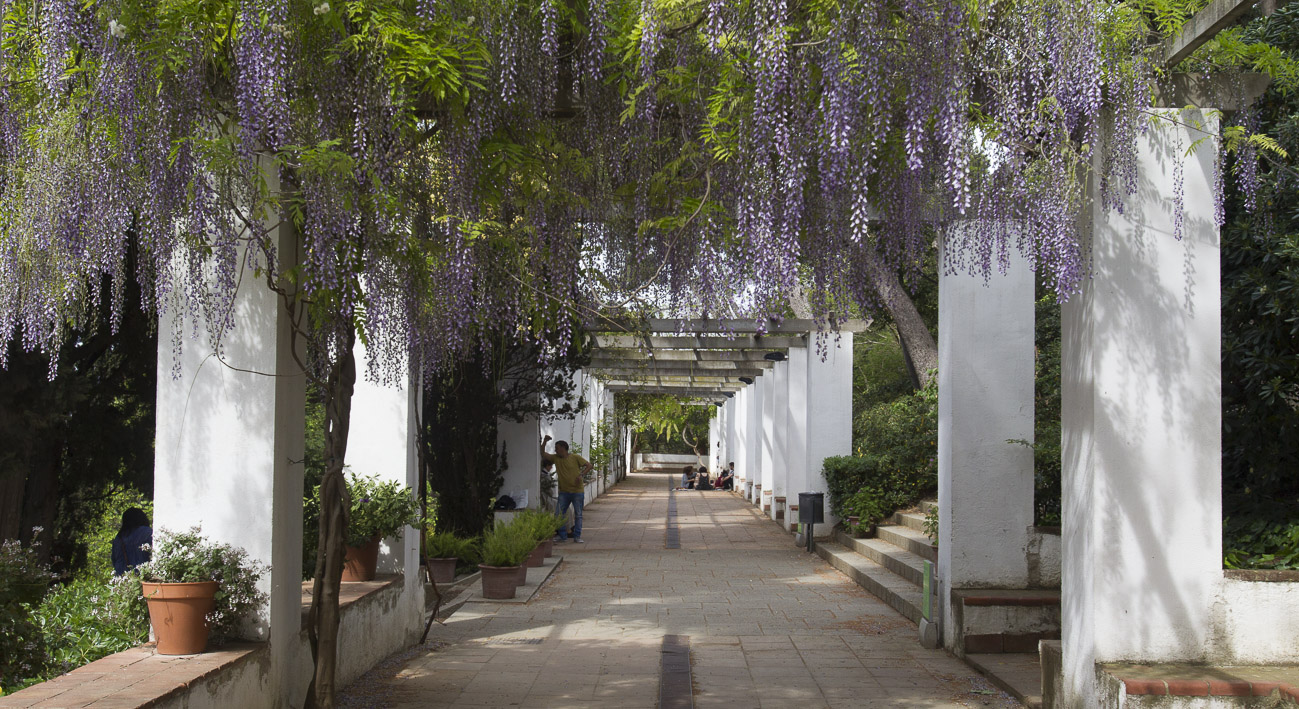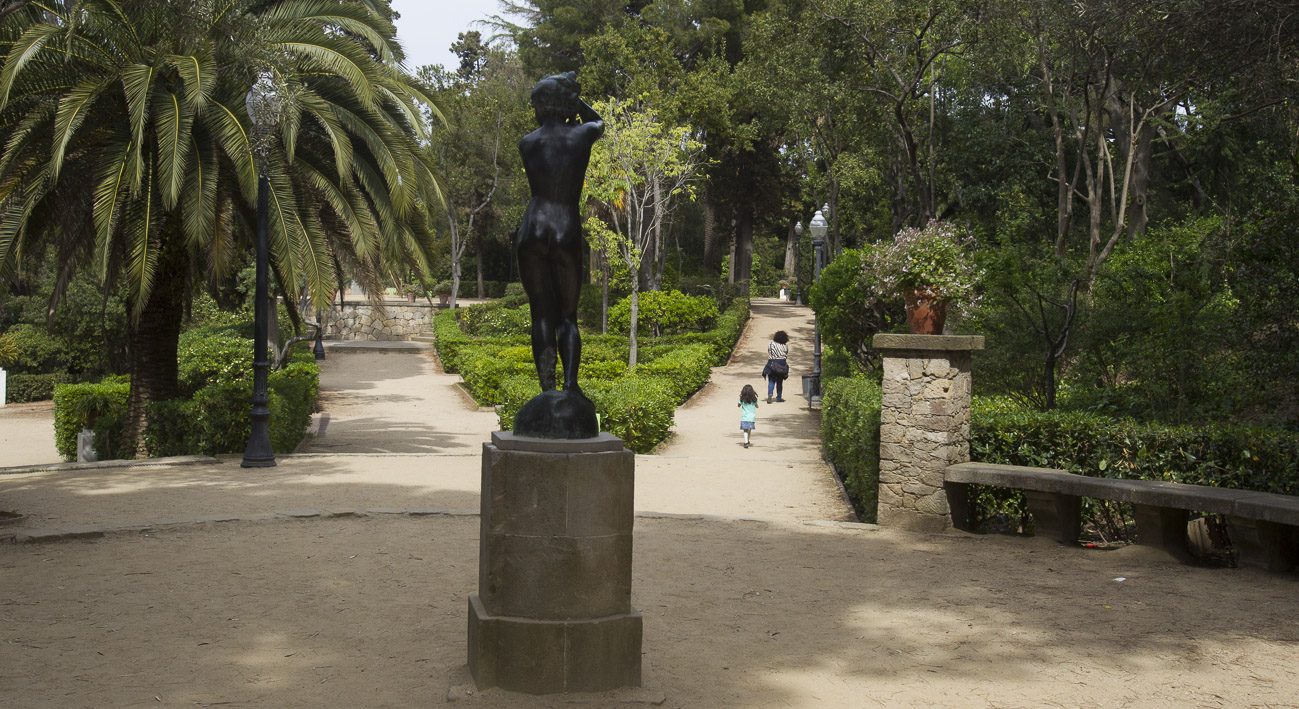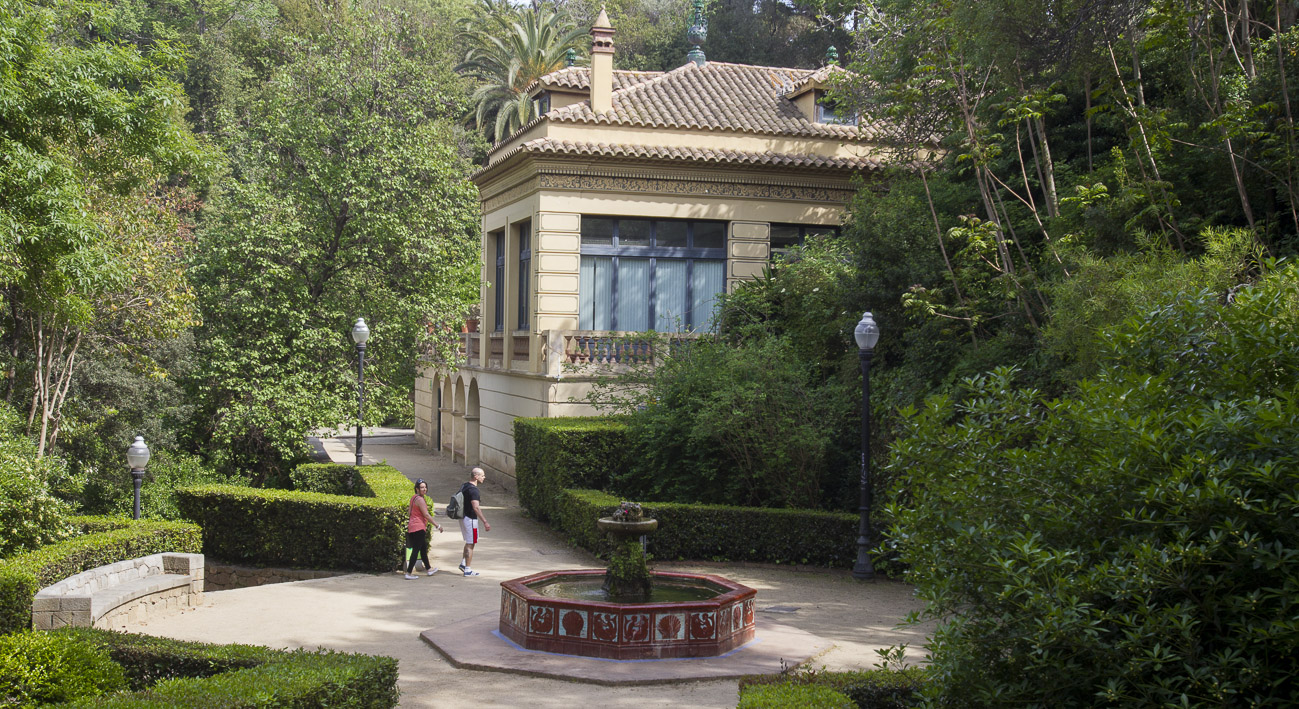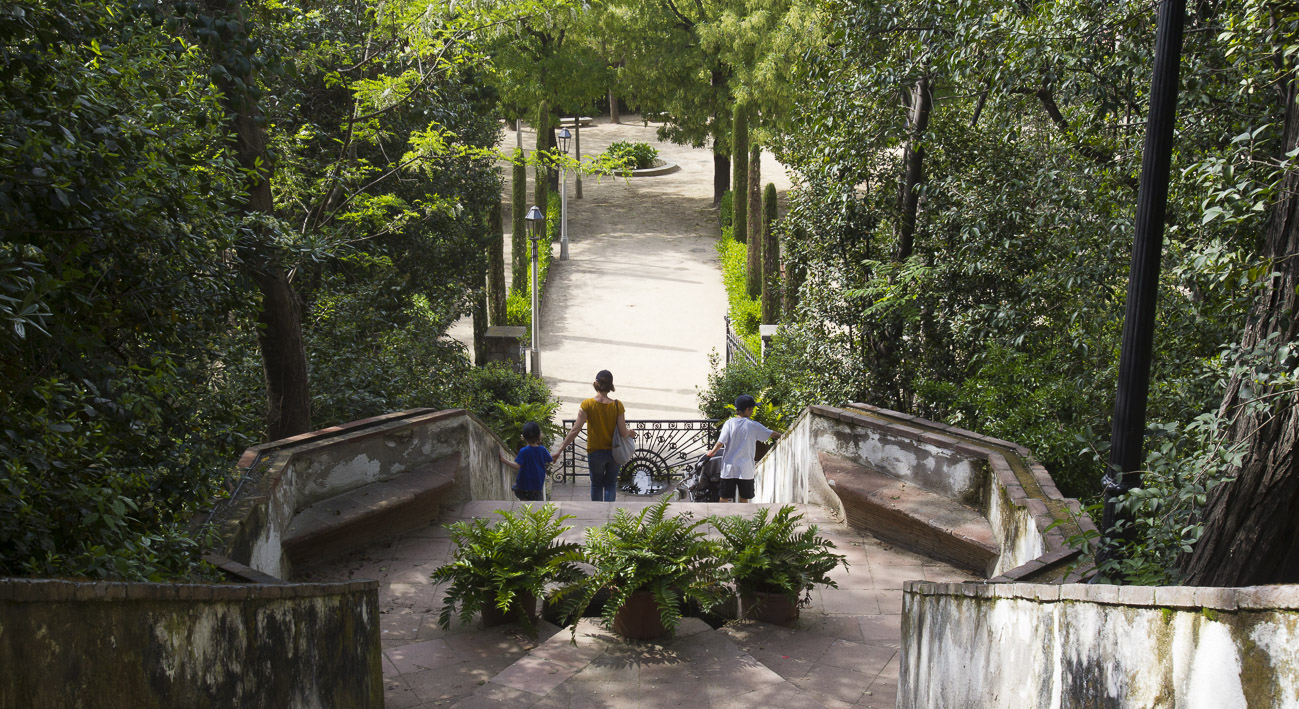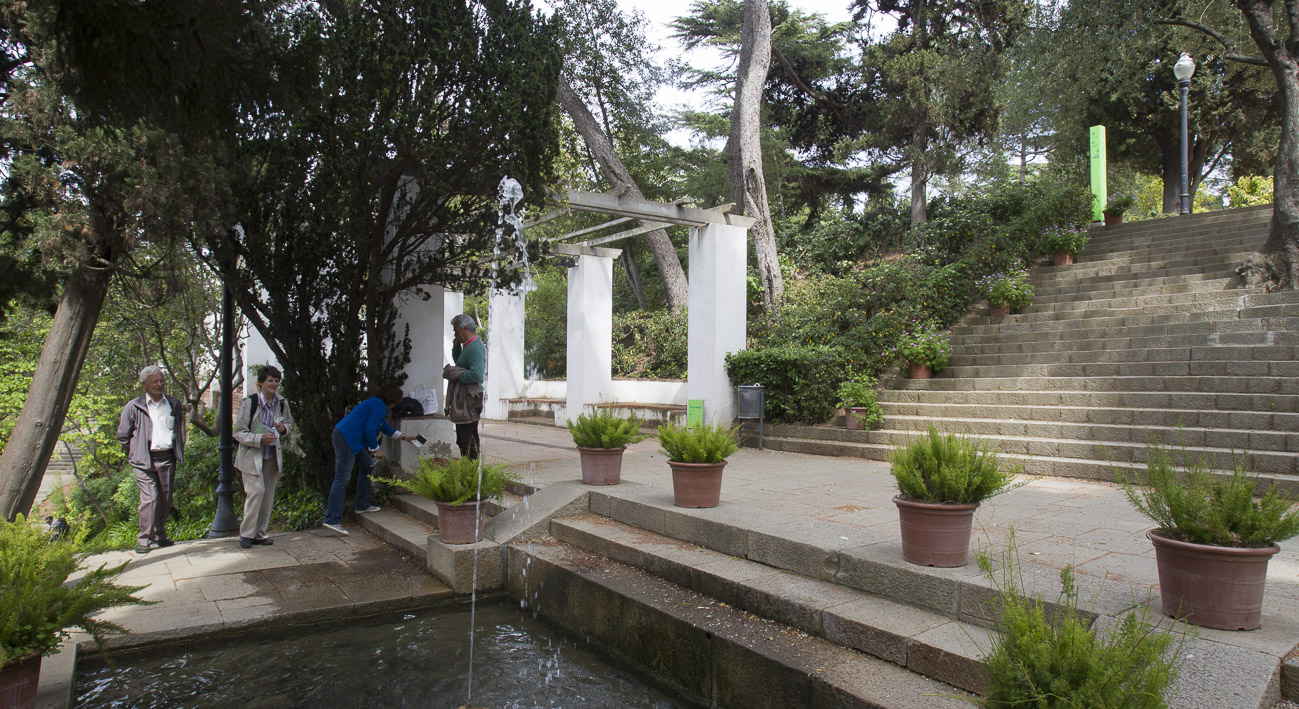A stroll in these gardens, one of Parc de Montjuïc’s gems, is a real pleasure. The lush vegetation, the water dropping from the cascades and gently flowing between the broad side walls, tiled benches and small squares form a whole of exceptional beauty.
This was the first public rose garden to be created in Barcelona, and known as the Colla de l’Arròs or “Rice Group” garden. It is a place for spending time in, observing and gradually discovering the large number of details that shape it, with a harmony it would be difficult to beat. And its views of the city are even better.

History
At the beginning of the last century, the area now occupied by the Jardins de Laribal used to be a venue for public and private meetings, such as the ones held by the Colla de l’Arròs, or “Rice Group”, a cross between a culinary and a political group that enjoyed some influence in the Barcelona of the late 19th and early 20th centuries, and which met in a small building located where the Museu Etnològic (Ethnology Museum) now is.
The upper part of today’s gardens once belonged to the estate of Josep Laribal, a prestigious lawyer and journalist (co-director of the popular newspaper El Diluvio) whose name lives on with the gardens. The City Council acquired the estate in 1908 and founded a school there, the Escola del Bosc. Studies were also begun to develop and landscape Montjuïc, a comprehensive project initially entrusted to Josep Amargós.
The Jardins de Laribal, completed in 1922, are associated with a later event: the 1929 Barcelona International Exposition. One of its curators was Francesc Cambó, who commissioned the French civil engineer and landscape artist, Jean Claude Nicolas Forestier, and his assistant, the young architect Nicolau M. Rubió i Tudurí, with the landscaping work. They created a new Mediterranean-based landscape style here.

Art and Architecture
Sculpture is a notable feature of these gardens, both for its quality and beauty. The gardens are dominated by Jaume Otero’s Estival (Summertime, 1929), a seated female figure made from marble in the Art Deco style.
Another work there is Josep Viladomat’s La noia de la trena, (1928), another female nude, this time made from bronze, representing a young girl plaiting her hair. The third sculpture, also by Josep Viladomat, is of a woman, based on an original by Manolo Hugué. This is Repòs (Rest, 1925), a life-size, female nude made from stone and standing in a circular square close to the entrance next to the Joan Miró Foundation.
There is a glazed ceramic fountain near the rose garden, decorated with sea motifs and crowned by a fountain jet designed by the ceramicist Llorens Artigas. The gardens house a famous fountain, the Font del Gat, which was a very popular among the city’s residents during the latter part of the 19th century. Its water flows from the head of a cat sculpted by Joan Antoni Homs in 1918.
-
- Phone number
- Tel.: 010
-
- Accessibility
- Accessible for people with physical disabilities
-
- Titularity
- Public center
- Address:
- Pg Santa Madrona, 2
- Districte:
- Sants-Montjuïc
- Neighborhood:
- el Poble-sec
- City:
- Barcelona
Timetable
| Periode | Dies | Hores | |
|---|---|---|---|
Horari d'hivern de l'1 de novembre al 31 de març |
Cada dia | de 08.00 h a 19.00 h | |
Horari d'estiu de l'1 d'abril al 31 d'octubre |
de 08.00 h a 21.00 h |
aproximada, en funció de
l'horari solar (tanquen
quan es fa fosc, al capvespre)

